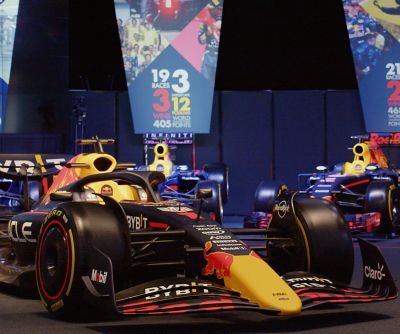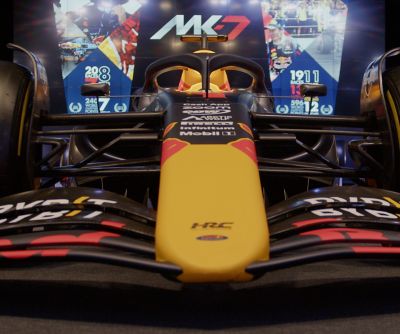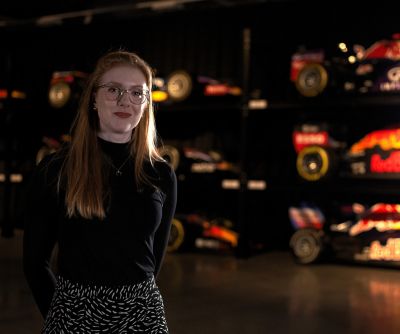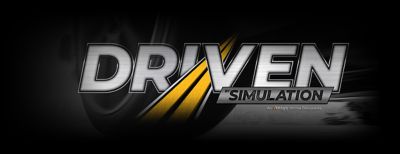-
Ansys is committed to setting today's students up for success, by providing free simulation engineering software to students.
-
Ansys is committed to setting today's students up for success, by providing free simulation engineering software to students.
-
Ansys is committed to setting today's students up for success, by providing free simulation engineering software to students.
-
Contact Us -
Careers -
Students and Academic -
For United States and Canada
+1 844.462.6797
ANSYS BLOG
July 24, 2023
Keep Pushing: Oracle Red Bull Racing Overtakes Design Challenges with Simulation
See how a racing team’s winning aerodynamic strategy takes shape in a virtual testing environment during the premiere of Ansys’ new docuseries “Driven by Simulation”
If you’re tuned into Formula One racing, you’re probably aware that Max Verstappen, Oracle Red Bull Racing driver and two-time Formula One world champion, is well on the way to winning his third title while helping Oracle Red Bull Racing clinch its 100th victory. Verstappen’s championship lead is also one for the record books, on par with late Formula One legend Ayrton Senna’s lifetime achievements at 41 wins, and potentially a triple championship.
It’s a truly exciting time for racing fans, as Verstappen and the rest of the Oracle Red Bull Racing team speed through another successful season. However, Verstappen's driving skill is only part of Oracle Red Bull Racing's success, as he has to rely on the car itself. In fact, Oracle Red Bull Racing Tech Chief Pierre Wache recently identified the efficiency of their 2023 Oracle Red Bull Racing RB19 Formula One car design as the single biggest force behind Verstappen’s unprecedented season this year.
So, what does efficiency mean in the context of Formula One? For Wache, it’s directly linked to aerodynamics, or the science of airflow, which considers the properties of the air as it moves and its interaction with solid objects moving through it. To illustrate this idea, imagine sticking your hand out the window, palm to the wind, and feeling the force of the wind pushing back as you drive. On the track, this force is significant, as Formula One cars experience airflow around a car traveling at speeds in excess of 223 mph (358 kph).

Drag: The Downside of Downforce
Racing aerodynamics are primarily a function of the front end of the vehicle, including the overall shape, side mirrors, ducts, the suspension, and vehicle floor. The objective of Formula One design is to streamline a car’s shape to generate a lot of downforce, or aerodynamic force that pushes the car down on the track. As the air goes up, over, around, and underneath the car, downforce increases its grip, stability, and cornering at high speeds.
However, the downside of downforce is that it creates drag that can slow the car down. The faster the car goes, the more resistance, or drag force, it faces as it accelerates forward. The imperative for Oracle Red Bull Racing is to strike the perfect balance between both downforce and drag in a winning vehicle design, which traditionally requires a lot of wind tunnel time the team doesn’t have.
The challenge was exacerbated during the 2022 season. Several new front wing and nose design requirements introduced by Formula One and the FIA (the governing body of motorsport) in 2022 were announced that would radically influence other parts of the car.
And while aero is a significant factor in designing the front end of the car, the floor design was also critical. Within the rules for 2022, the FIA made it so the cars now rely on ground effect, effectively channeling the aero underneath the car rather than over the top to reduce the effect of dirty air — or turbulent air currents caused by fast-moving cars — on following cars, with the aim of making overtaking easier during a race.
For Oracle Red Bull Racing engineers, this turn of events was a huge shift from a focus on the wings and other aero surfaces, to the exploitation of the underside of the car.
In the end, what could have been considered a major setback has instead inspired the Oracle Red Bull Racing team to double down on a more efficient strategy with help from Ansys, an Oracle Red Bull Racing Innovation Partner since 2008. Ansys simulation is helping the world’s greatest motorsport teams heighten their competitive edge.

Hitting the Apex of Automotive Engineering with Simulation
When you’re a driver sitting on the grid and the whole world is watching, there’s no time to assess the enormous complexity of the race ahead, despite the risks. Self-doubt is replaced by determination and complete focus, as any miscalculation on the track can be costly — or even fatal.
Like Formula One drivers, Oracle Red Bull Racing’s engineers have no room for error. They are tasked to push the boundaries of automotive engineering and design to evaluate, test, and optimize aero-critical components and assemblies, including braking, cooling, and exhaust assemblies before the season begins. All this activity is shaped by varying track topographies and conditions faced by both car and driver on the circuit.
To tackle their aerodynamic challenges, Oracle Red Bull Racing engineers pivoted to simulation to test a computer-aided design (CAD) model of the car’s exterior in a virtual wind tunnel. Iteratively testing different versions of their designs in a virtual environment enables faster, more economical analyses. The Oracle Red Bull Racing team gathered simulation data they could then validate against a physical prototype of their final concept in an actual wind tunnel.
Specifically, Oracle Red Bull Racing employs Ansys’ simulation solutions to analyze aerodynamics and engine cooling intakes with Ansys Fluent. The Oracle Red Bull Racing team also conducts materials data management and optimization with Ansys Granta MI and performs virtual impact testing with Ansys LS-DYNA.


Zoe Chilton, head of Strategic Partnerships, Oracle Red Bull Racing explains how simulation is a key part of the development process in episode 1 of Driven by Simulation.
“Simulation is now a really key part of our development process for all sorts of parts for the car — but critically, aerodynamics,” says Zoe Chilton, head of Strategic Partnerships, Oracle Red Bull Racing. “When we think about computational fluid dynamic simulation, the biggest job that it serves, probably on the chassis side, is how that exterior of the car is going to be shaped. And that’s not just individual components, but the whole concept. How do we create downforce, how do we make the car heavier as it goes faster, and how do we get the balance right between downforce and straight-line speed? Because different circuits require different things from the car.”
A major component of Oracle Red Bull Racing’s competitive edge comes from their ability to engineer, test, tweak, and adapt its winning vehicle design continuously, right up until race day. For more insight, tune into episode one of “Driven by Simulation" to hear Oracle Red Bull Racing talk simulation and aerodynamic strategy.
See What Ansys Can Do For You
See What Ansys Can Do For You
Contact us today
Thank you for reaching out!
We’re here to answer your questions and look forward to speaking with you. A member of our Ansys sales team will contact you shortly.












